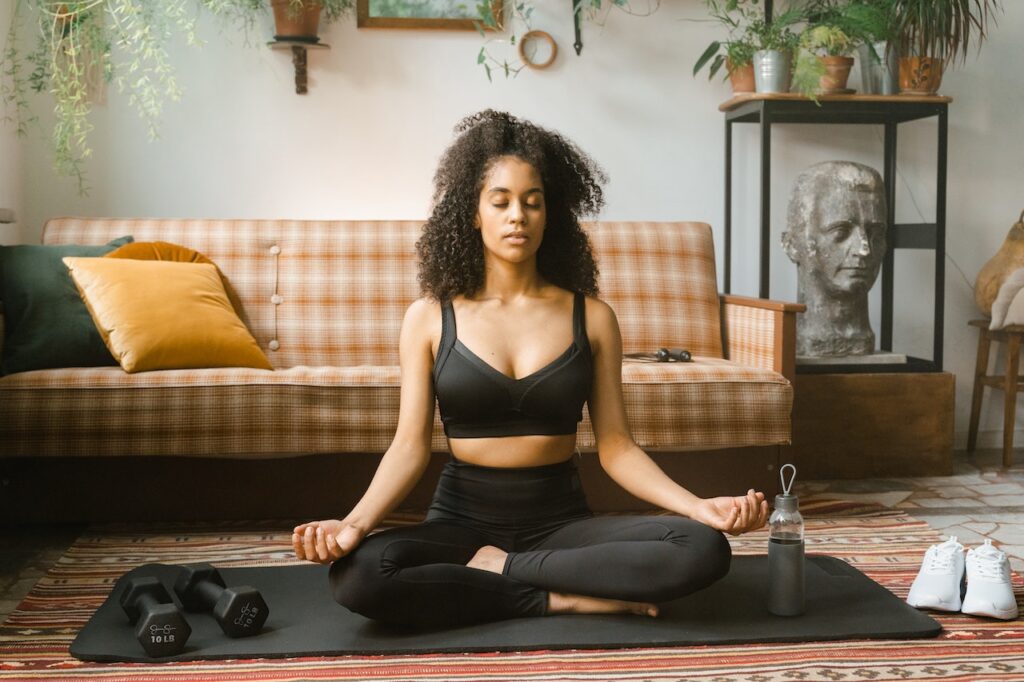The Rise of Home Gym Culture
Gone are the days when fitness routines were solely linked to sprawling gyms and state-of-the-art equipment. Over the past few years, we’ve seen a dramatic shift towards home workouts and home gym setups, a trend further propelled by the global health scenario.
The home gym culture has emerged as a viable alternative to traditional gyms, reshaping our perceptions of fitness. The popularity of home workouts lies in their convenience, cost-effectiveness, and the freedom they offer to experiment with various workout routines. Plus, the opportunity to tailor your fitness journey right in the comfort of your home is quite empowering, to say the least.
Read our article to choose the right home gym equipment for your needs.

The "Bigger is Better" Myth
One of the most persistent norms in the fitness world is the notion that bigger and more expensive equipment guarantees superior results. This is not always the case. While robust machines and elaborate equipment can certainly enhance your workout, the essence of fitness goes beyond the scope of these physical entities.
Home gym setups are often minimalistic, focusing on essential equipment and space utilization. Many effective workouts, like bodyweight exercises, resistance band training, or yoga, require very little equipment. It’s all about using what you have in the most effective way. So, if you’re deliberating over the size of your home gym, remember, bigger doesn’t always mean better.
Cardio vs Strength Training: Breaking the Binary
The classic binary of cardio for weight loss and strength training for muscle gain has dominated the fitness industry for years. However, it’s time to break this binary and embrace a balanced approach to home workouts.
Cardio exercises are essential for cardiovascular health and do help in weight loss, but they’re only one part of the puzzle. Similarly, strength training isn’t just about bulking up; it’s also vital for bone health, improving metabolism, and supporting weight loss. Therefore, a balanced fitness regime should incorporate a blend of cardio exercises, strength training, and flexibility workouts, providing a comprehensive fitness experience right within your home gym.
With these new perspectives, we aim to challenge traditional norms and redefine what fitness truly means in the home gym setting. The journey to fitness is highly personal, and no one-size-fits-all approach can define it completely.
Challenging Diet Stereotypes
There are numerous diet stereotypes circulating, from the over-emphasis on protein to the demonization of carbs or advocating for extreme diets for quick weight loss.
However, it’s crucial to remember that everyone’s body responds differently to various diets. What works for one person may not work for another. Extreme diets often lack sustainability and can lead to nutritional deficiencies. Instead, maintaining a balanced diet with an appropriate mix of protein, carbs, and healthy fats should be the cornerstone of your fitness journey.
Don’t be swayed by the allure of quick results. Emphasize long-term, sustainable habits that support your fitness goals and overall health. Your diet should fuel your workouts, aid in recovery, and keep you feeling your best.
Fitness Motivation: More Than Just Numbers
One of the traditional norms that many fitness enthusiasts get caught up in is the obsession with numbers. Whether it’s the number on the scale, body measurements, or the number of reps, we’ve been conditioned to measure success with tangible figures.
While tracking progress is necessary, fitness is much more than just numbers. It’s about how you feel, the increase in your stamina, the extra rep you can do, and the overall improvement in your health and wellbeing. Non-scale victories, like fitting into an old pair of jeans, feeling more energized, or being able to do a push-up for the first time, are just as significant as the number on the scale.
Set personal fitness goals, track your progress, but remember to celebrate the journey and the small victories along the way.
The Overlooked Importance of Rest and Recovery
“No Pain, No Gain” is a mantra often thrown around in the fitness community. While it’s important to challenge yourself during workouts, this saying overlooks the vital role of rest and recovery in fitness.
Rest is when the body heals, adapts, and grows. Neglecting rest and recovery can lead to overtraining, increased risk of injuries, and a decline in performance over time. Incorporating adequate rest days, focusing on good sleep, and practicing active recovery like stretching and light cardio, are integral parts of a well-rounded fitness routine.
Remember, your home gym isn’t just a place for sweat and exertion; it’s also a space for rest and recovery.
Conclusion
As we challenge traditional fitness norms and misconceptions, we pave the way for a more effective and personalized home fitness journey. By redefining what fitness means to us, we can optimize our home gym experiences to suit our unique goals, preferences, and lifestyles.
Embrace the journey of fitness with an open mind, question the norms, and don’t be afraid to redefine what fitness means to you. Remember, fitness is a lifelong journey, and your home gym is your personal space to explore, experiment, and enjoy the ride.
